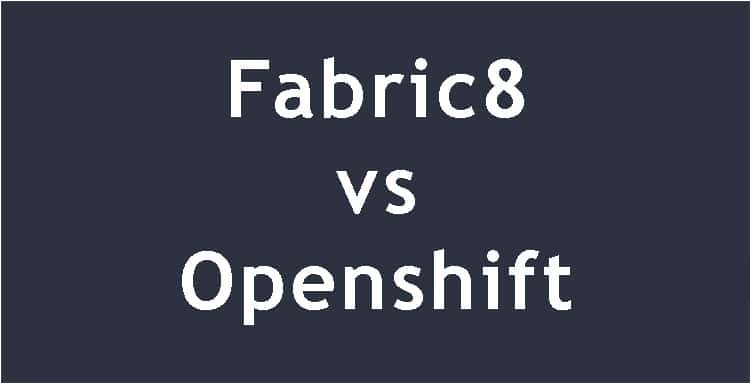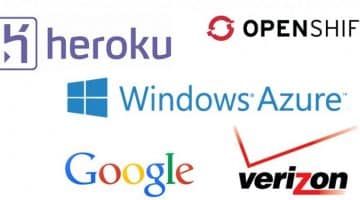Good day! Have you just heard of fabric8 development? Have you been using Openshift container before? You are now wondering what is the relationship and differences between this two. Don’t worry, I will tell you what Fabric8 is all about in these articles. I am also going to let you know benefits and features of RedHat OpenShift, and then you will learn the main difference between this two application platforms. Hire freelancers today to help handle your programming problems.
Fabric8
It is useful to know the history of the material before explaining what it is. The use of middleware has changed in recent years; now do not (most) giant organizations have a BSE / message broker with only one or two cases.
Managing some cases of middleware using to connect remotely with them and thus writing configuration files could be a viable and sustainable approach (if not specifically best practice) to manage a time instance numbers Are measured at the bottom. You can search for freelance services online to help handle issues on fabric8.
When organizations begin to implement middleware at their remote sites, particularly when they measure up to tens of thousands of them, the simple manual approach used historically is not feasible. This is also true for elastic systems housed by the cloud where the number of cases is giant and the measure of the infrastructure of square cases “dynamic.” It is the definition of this more advanced of the tissue born in FuseSource, that was intrinéable by RedHat in 2013.
Fabric8 is the open source upstream project for JBoss Fuse. Fabric8 is the underlying technology for the JBoss integration platform as a service, currently in beta in OpenShift.
Manage Settings
- Contains a configuration management system for code and configuration files using Git. You can hire freelancer to help in configuration.
- The concept of a profile exists a set of folders and configuration files, then measure the application moment normally instantiated, eg. Ex. Active runners, fuses, etc.
- It supports multiple versions of profiles in the fabric (unpleasant personal branches) with a support of gradual updating and progressive removal and easy, obviously, through the use of an unpleasant person.
- Provides scalability and high availability
- It is scalable and durable thanks to the use of Apache Zookeeper: Configuration profiles contain literally every instance of fabric.
- Manage the complexity of computer addresses and the assignment of ports for you through the written record of the Service (stored in Zookeeper).
- You can perform collection equalization services through the written record of the Service.
- The service registry allows the transparency of the service location – for ActiveMQ, mammals Instrumentation artiodactyl provides a zero configuration for the user “simply works”.
- It controls the “split brain” problem caused by network failures, requiring a strange variety of Zookeeper bodies in the tissue.
- Supports Docker: will be the preparation of the proposed technology for Fuse vi.2.
- Allows tissue administration
- It is controllable through a Web console (through sloppy use 8181) using Jolokia and Hawaii. The console provides an easy way to manage hardware and intrinsic Wiki documents profiles.
- Provides an interactive shell for web management for people who do not want to use the online interface. This shell supports automatic padding and the history of the Linux program line.
- Maven plugins will be used to install and deploy Java code on hardware. Using the star plugin behave profiles in the initiation process; Thus, existing versions will free your profile configuration files (for example, links to different jars/wars, etc.). Each multi-drive project will produce a single file with all profiles (files) and configuration files; Then, in Fuse 6.2 (or one.1.x fabric8) are imported to any fabric through a command line.
- The fabric provides a repository that serves as a cover Highlight all necessary native artifacts loaded from the square footage of public repositories / internal stars.
- Designed for and includes integration and middleware messaging
Fabric8 contains:
- Apache Karaf OSGI Container.
- Apache Camel integration technologies that support normal business integration models.
- Fuse ESB with Apache CFX to support Web services, REST, and SOAP.
- For ActiveMQ message cutter that supports common wireless protocols.
Is extensible
- The Web Console extends through the use of Hawaii plugins.
- The fabric (Fuse vi.2) can implement any Java program with the main category.
- The fabric version under development (free as Fuse Version vi.2 this year) not only supports ApacheMQ Karaf OSGI and instrumentation, JBoss EAP, JBoss Application Server and Tomcat.
Red Hat OpenShift
Red Hat OpeShift is complete application platforms that natively integrates instrumentation technologies such as crafts and Kubernetes, a powerful system for managing and organizing the clustered container, combine it with a company based on Red Hat Enterprise UNIX.
Open Change integrates the architecture, processes, platforms, and services needed to enhance development and operations groups.
Open Shift features and benefits.
Applications with the state and stateless
Red Hat OpenShift runs and supports both state and homeless applications. This allows you to demand the most from the containers without having to completely restructure your business applications.
Modernize your applications
Open Change Red Hat JBoss Middleware provides combined with native, modular, cloud services including development tools, business automation, data management, and more. You develop faster, smarter, more flexible and will overcome the challenges of building distributed application services Microsystems.
Red Hat OpenShift capabilities have enabled us to modernize our instrumentation orchestration applications, KeyBank helps to enhance our customers’ experience and increase our speed of delivery. Red Hat’s commitment to us, from senior executives to engineers and developers, is an important factor in our success.
Building a better and stronger hybrid cloud
To implement and support base any open Shift Red Hat Enterprise Linux-a for public and private clouds implemented and supported. This includes Amazon Web Services, Azure, Google Cloud Platform, VMware and more. With Open Shift, you can provide a platform for instrumentation applications through these public and private clouds.
Embrace DevOps
OpenShift provides development and operations teams, a common platform and toolkit. That is, in both groups with a common flow and continuous development and maintenance of applications. This approach can eliminate slow manual processes and ways of working at the pace your business demands. It’s service also available as freelance services online.
Conclusion
Fabric8 is an upgraded Open Support DevOps and integration platform that works out of the box in any Kubernetes or OpenShift environment and provides continuous delivery, Chaos Monkey, ChatOps, and management.


